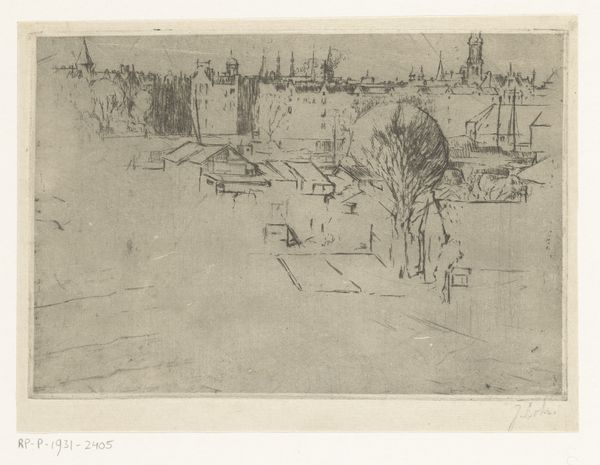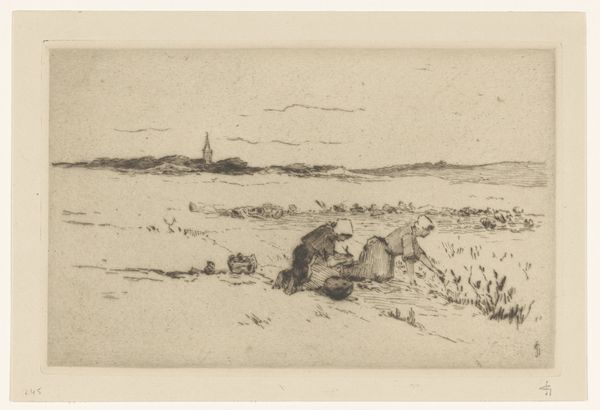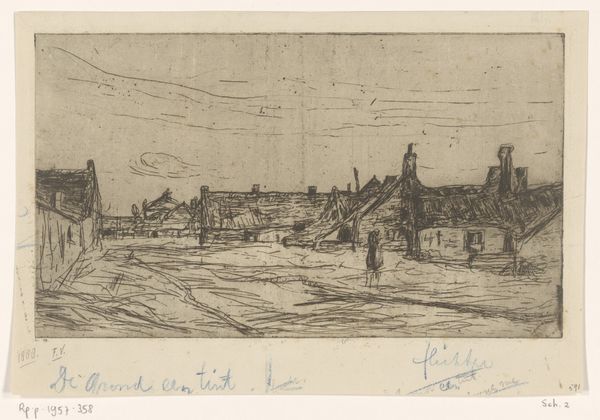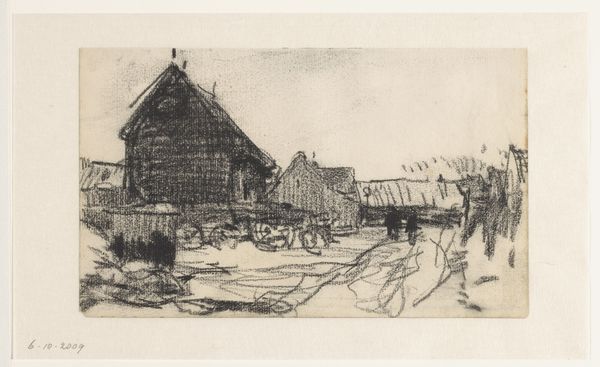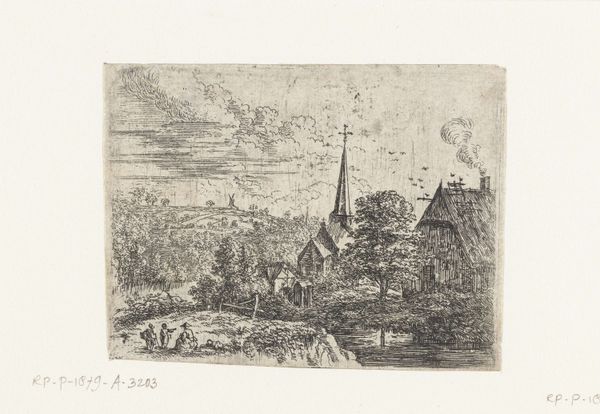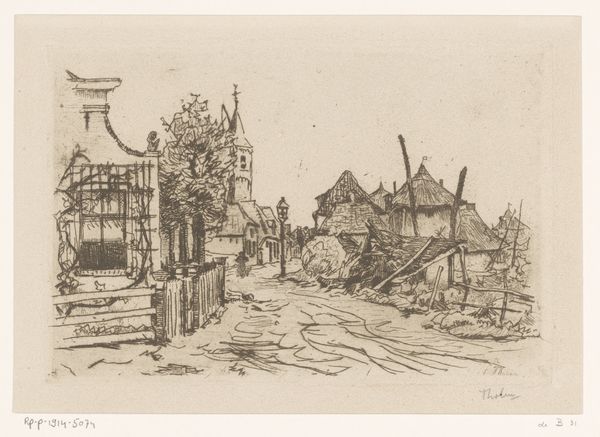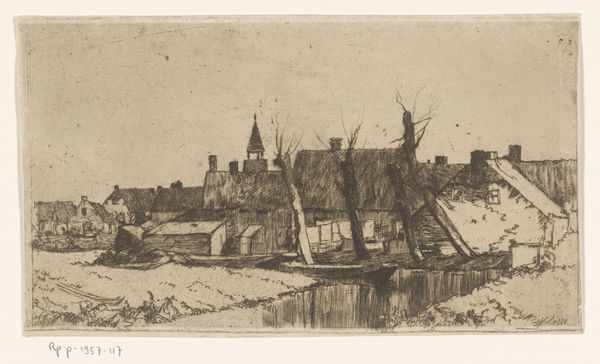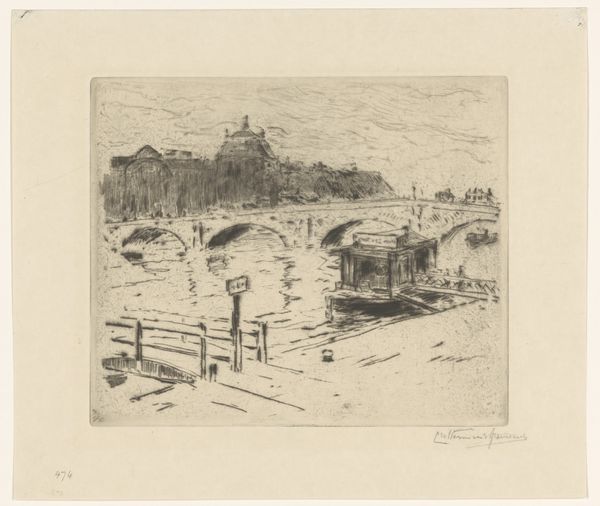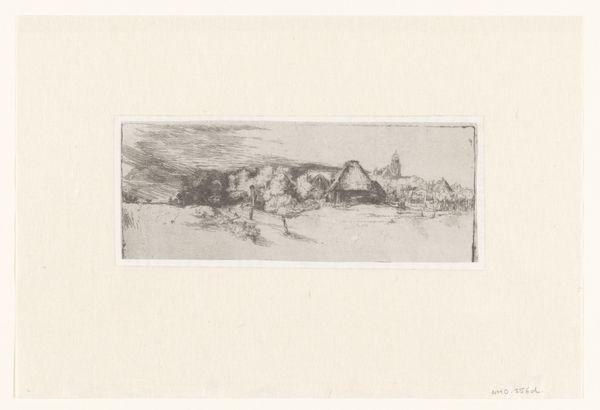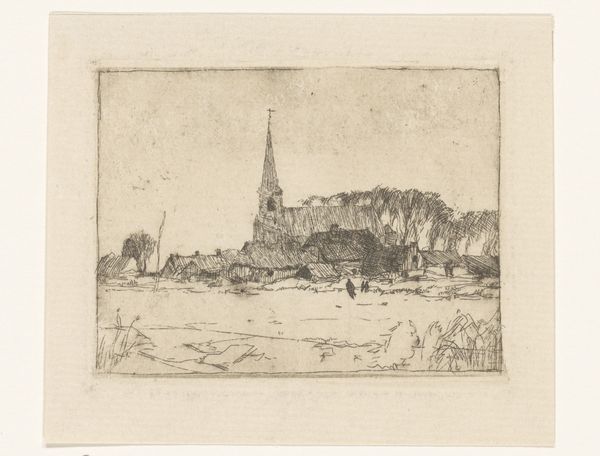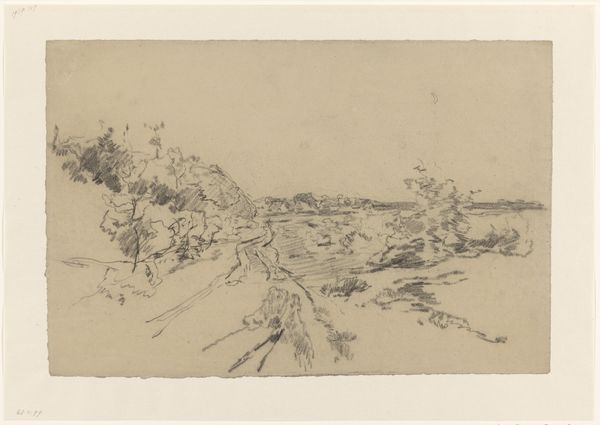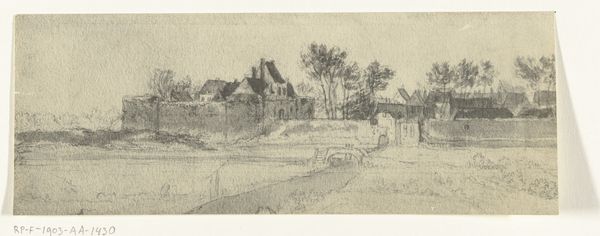
print, etching
#
dutch-golden-age
# print
#
etching
#
landscape
#
etching
#
geometric
#
cityscape
#
realism
Dimensions: height 160 mm, width 305 mm
Copyright: Rijks Museum: Open Domain
Willem Adrianus Grondhout created this etching of Ulm, with its intricate network of rooftops and towers, sometime before 1934. Dominating the skyline, the towers are more than mere architectural features. The tower, as a symbol, transcends time and cultures. Consider the Tower of Babel, a testament to human ambition and a symbol of the confusion that arises when we lose sight of shared understanding. Similarly, in medieval art, towers often represent spiritual aspiration, a reaching towards the divine. Yet, they can also symbolize isolation, the solitary confinement of the self, cut off from the world. Here, the towers of Ulm evoke a sense of historical continuity, linking the present to the past. This echoes the psychological concept of collective memory, in which shared symbols and narratives shape our understanding of the world. Each brick laid, each story told, adds a layer to the tower's meaning, making it a repository of human experience. It stands as a reminder of our shared cultural heritage, resonating deep within our subconscious, connecting us to those who came before.
Comments
No comments
Be the first to comment and join the conversation on the ultimate creative platform.
